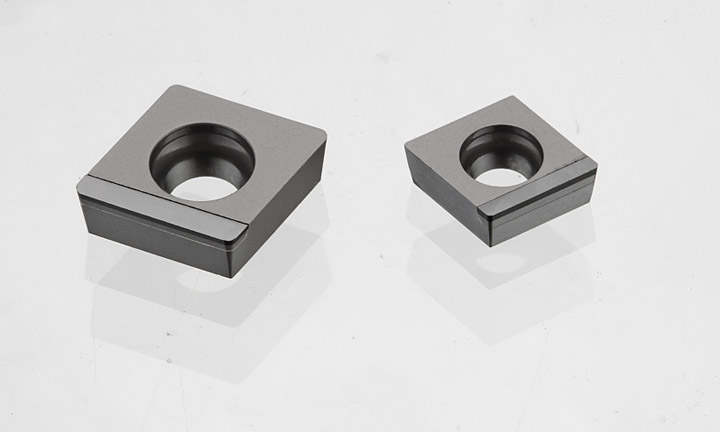Products
PCD single tool is the diamond layer and the tungsten carbide base with a tool material. However, the combination of the two materials is through high temperature
Under high pressure through a complex process and become, usually PCD of the rough embryo is like a mini CD tablets, need to be up and down grinding, polishing
And wire cutting, laser cutting can be applied to every kind of tools.
PCD polycrystalline diamond and no crystallization direction, while the general natural diamonds are, so be careful to find the crystal line
The direction of the party can play its effect, however, the crystallization of PCD does not have a special direction, there will be no hard and soft side of the face.
PS: turning hard rubber material, with a certain value of tool wear to the abdomen, the time taken to make a conclusion.
PCD polycrystalline diamond, different particle crystal structure, main components 1µ, 2µ, 5µ, 10µ and 25µ.
The diamond layer particle size is the key to the surface roughness and tool life of the machined surface.
The application of PCD artificial diamond
Artificial diamond processing objects, is non-ferrous metals, cobalt, nickel based metal based, (as shown in Table 1), so the car, motorcycle, bicycle Widely used.
In general, the use of ceramic tools, tungsten carbide tools are likely to use the PCD tool, because PCD has better the wear resistance and hardness of the characteristics, and so can play the advantages of PCD, such as unit time capacity, downtime time, better surface roughness, workpiece size consistency.
PCD diamond tool can be wet or dry machining, but it's beter to be wet ! cutting fluid should be water-soluble cutting oil , emulsifier.
Good cutting fluid can effectively reduce the problem of cutting heat and cutting edge.
|
Names |
Polycrystalline Diamond-Chamfering |
|
Materials |
Non-ferrous materials, such as Gold, Copper, Aluminum, Rubber, Graphite, Tungsten Carbide Bakelite, Glass fiber, Carbon fiber. |
|
Hardness |
HV6500~8000 |
|
Property |
Non-direction hardness, Gold conductivity Low thermal expansion efficiency Low resistance efficiency |

